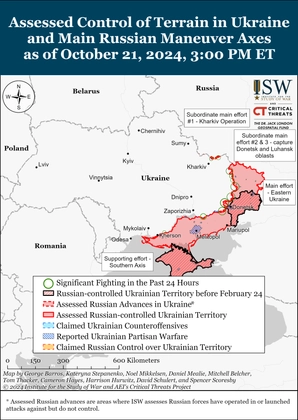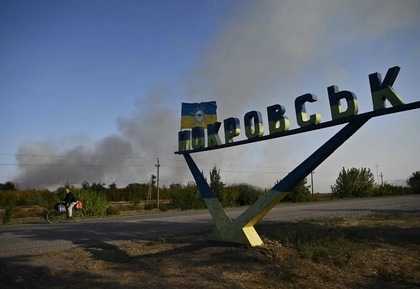The whole world stands in awe as the Ukrainian Armed Forces (UAF) advance in the Kharkiv region, beating the Russian army back and forcing them to flee. This is a key moment for celebration, not only for the people of Ukraine, but for all the free nations of the world.
Clearly, Western military assistance, upon which the survival of Ukraine depends, has not been wasted and is being used well. The UAF has shown its strength in being able to break through Russian defenses in a conventional military battle.
JOIN US ON TELEGRAM
Follow our coverage of the war on the @Kyivpost_official.
Yet the ability to wage war does not depend solely on the capacity of the country’s military. Ultimately, attritional wars – which the Russian-Ukrainian war has clearly become – are also won by the ability to outlast the opponent by virtue of available economic resources and a willingness to keep fighting. The nature of these wars is fundamentally economic, and the economy is the key front to watch.
So, what is happening on that front in Ukraine?
The economic toll of war
The war has caused a huge dent in Ukraine’s economy. GDP dropped by 19 percent and 37 percent respectively in the first and second quarters of 2022, with an overall drop of one third expected for the year.
Unemployment is also a huge problem. While the number of officially registered unemployed people in Ukraine is low, this is mostly a statistical artifact. Many people have not officially left their jobs but are either not actively working (and therefore not earning any income), not registered as unemployed or have left the country.

ISW Russian Offensive Campaign Assessment, October, 22, 2024
Broader data paints a very bleak picture, with 12 people seeking work per advertised vacancy. According to data from job search websites, about 30 percent of Ukrainians have lost their jobs since the start of the war. Even bleaker are the data on wages, which have grown by just three percent in that time, while the official inflation number stands at almost 20 percent as of August.
The only factors that mitigate these terrible job market conditions are the employment of about a million men in the military and the flight of several more million women and children to the European Union (EU) where many can receive temporary social assistance. Overall, it is clear that the war has brought terrible hardship to the population of Ukraine and has drained the economic resources available to the country.
State of public finances
This drain has had a huge impact on the nation’s public finances. The state budget operates with a monthly deficit of $5 billion, which the government is trying to reduce to $3 billion. This is covered mostly by financial assistance from friendly governments and International Financial Institutions (IFIs), but even that is not enough since part of the budget deficit has been financed by the National Bank of Ukraine (NBU) printing money. The latter is a great cause for concern, since it fuels inflation and currency depreciation, further endangering the stability of the financial system.
At the recent YES conference in Kyiv, the dreaded term “hyperinflation” was repeated several times by officials and experts as being a major risk. Capital controls, introduced by the NBU as a way to mitigate capital flight while helping to protect financial stability, inhibit financial inflows and thus further hamper the chances of economic recovery. The overall financial situation can be described as constantly on edge, with Ukraine totally dependent on foreign financial assistance.
Export recovery
On a brighter note, Ukraine has experienced improvements in logistics and a rebound in exports, particularly grain. The fact that Ukraine could not export enough grain while the storage depots were full proved a major threat to the new harvest, part of which risked being simply wasted.
However, thanks to the grain corridor agreement reached with Turkey’s assistance in late July, and to the improvements in logistical capacity on the Western border, agricultural exports have picked up. Unfortunately, the enemy has taken note of this, with Russian President Vladimir Putin already making comments that “the grain corridor is not achieving its aims.” This can be read as a thinly veiled threat to limit the maritime export route yet again, whatever form that might take.
The Russians already created one logistical crisis in Ukraine back in the spring and early summer, when they destroyed fuel refineries with missile strikes – it took Ukraine almost two months to recover. It will be very important to keep the grain corridor operating in full, using all diplomatic and military means available to ensure it.
Nevertheless, Ukraine has generally managed to keep its logistical system functioning and to improve its operations, despite very hard conditions imposed by the war.
Winter is coming
Energy is another critical area for economic sustainability. As of now, the situation is sustainable with Ukraine managing to keep the energy system operating and even to switch to the pan-EU electrical system. But winter is around the corner and things could take a turn for the worst.
While the government has made the necessary preparations for the heating season, the war makes the situation much more complicated. Recent missile strikes on energy facilities that have caused blackouts in the east of the country – executed by Russia in response to a successful Ukrainian advance in the Kharkiv region – clearly show the risks the country faces.
When winter arrives, further strikes on energy and heating infrastructure are to be expected. The loss of the Zaporizhzhia Nuclear Power Plant from Ukraine’s electricity grid is also likely, as the station remains in Russia’s grip. This would create disruption to energy and heating supplies to the population throughout the winter and force Ukraine to buy additional energy resources, leading to even greater financial assistance needs.
Bolstering the economic front
Have no doubt – the current economic environment is extremely challenging, but successfully navigating it is critical to Ukraine’s war effort. All possible measures should be taken to revive the economy (as far as possible during the war) and to shore up public finance. Since it is unrealistic to expect any serious revival in investment until hostilities end, every possibility should be given to people and businesses to generate income.
Perhaps it is time to reconsider the policy of keeping the borders closed for men, since exports and trans-border business activities keep the economy afloat, and these are hampered heavily by the inability of people to travel. Clear agreements with IFIs and friendly governments on the necessary amount of budget financing should be reached, including the financing of emergency energy resource procurement over the winter season.
The economic front tends to generate less public attention than its military equivalent. Yet, the economy is no less important than what happens on the military frontline. It is only through the combination of robust and sustainable economic policy combined with military successes that the war can be won.
The views expressed are those of the author and not necessarily of Kyiv Post.
You can also highlight the text and press Ctrl + Enter






